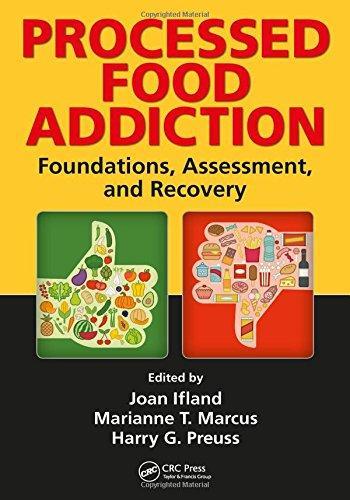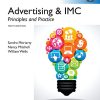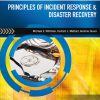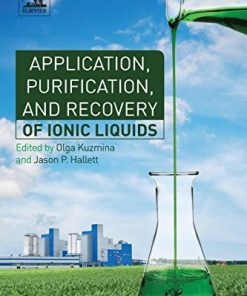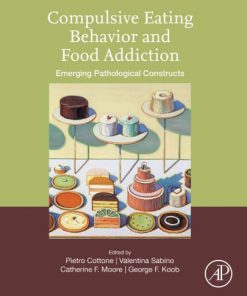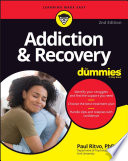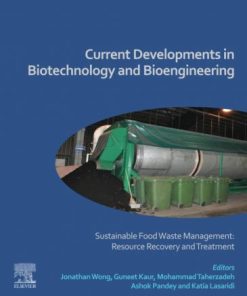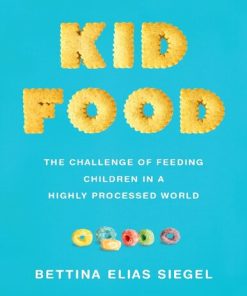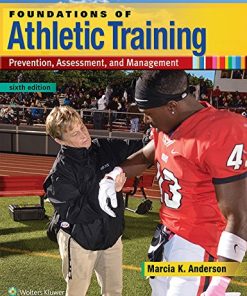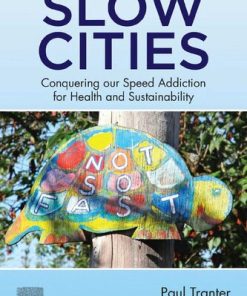Processed Food Addiction: Foundations, Assessment, and Recovery 1st Edition
$50.00 Original price was: $50.00.$25.00Current price is: $25.00.
Processed Food Addiction: Foundations, Assessment, and Recovery 1st Edition – Digital Instant Dowload.
Processed Food Addiction: Foundations, Assessment, and Recovery 1st Edition – Digital Instant Dowload.
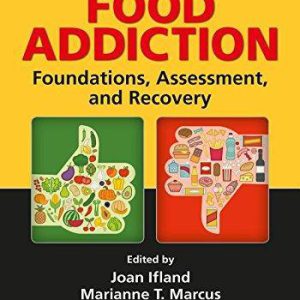
Product details:
- ISBN-10 : 0367503425
- ISBN-13 : 978-0367503420
- Author: Joan Ifland
Obesity and eating disorders have stubbornly refused to respond to treatment since the 1990’s. This book organizes the evidence for a possible answer, i.e., that the problem could be one of addiction to processed foods. In a Processed Food Addiction (PFA) model, concepts of abstinence, cue-avoidance, acceptance of lapses, and consequences all play a role in long-term recovery. Application of these concepts could provide new tools to health professionals and significantly improve outcomes.
This book describes PFA recovery concepts in detail. The material bridges the research into practical steps that health professionals can employ in their practices. It contains an evidence-based chapter on concepts of abstinence from processed foods. It rigorously describes PFA pathology according to the DSM 5 Addiction Diagnostic Criteria. It applies the Addiction Severity Index to PFA so that health practitioners can orient themselves to diagnosing and assessing PFA. It contains ground-breaking insight into how to approach PFA in children.
Table contents:
Part I. Foundation
Overlap between Drug and Processed Food Addiction (PFA) – Pamela M. Peeke, Joan Ifland
Neurodysfunction in Addiction and Overeating as Assessed by Brain Imaging – Randall J. Ellis, Michale Michaelides, Gene-Jack Wang
Neural Vulnerability Factors for Overeating: Treatment Implications – Eric Stice, Zack Stice
Sugar Consumption: An Important Example Whereby Recognizing Food Addiction May Prove Important in Gaining Optimal Health – Harry G Preuss, Joan R Ifland
Sugar and Fat Addiction – Kristen Ciscitelli, Nicole Avena
Abstinent Food Plans for Processed Food Addiction (PFA) – J. R. Ifland,H.G. Preuss, M.T. Marcus, K.M. Rourke, W.C. Taylor, H. Theresa Wright, K. Sheppard
Mindfulness Therapies for Food Addiction – Marianne T. Marcus
Part II. Diagnosis and Assessment
Introduction to Part II, Diagnosing and Assessing Processed Food Addiction (PFA) – Dennis M. Donovan, Joan Ifland
Assessment of food cravings -Adrian Meule
Case Study: Severe Processed Food Addiction – Natalie Gold
DSM 5 SUD Criterion 1. Uninteded Use – Theresa Wright, Joan Ifland
Criterion 2. Failure to cut back – Diane Rohrback, Joan Ifland
DSM 5 SUD Criterion 3. Time Spent – Elaine Epstein, Joan Ifland
DSM 5 SUD Criterion 4. Cravings – Joan Ifland
DSM 5 SUD Diagnostic Criterion 5. Failure to fulfil roles – Carrie Willy, Joan Ifland
DSM 5 SUD Diagnostic Criterion 6. Interpersonal Problems – Robin Piper, Joan Ifland
DSM5 SUD Diagnostic Criterion 7. Activities Given Up – Rhona Epstein, Joan Ifland
DSM 5 SUD Diagnostic Criterion 8 Hazardous Use – Jennifer Mason Cross, Joan Ifland
DSM 5 SUD Criterion 9 Use in Spite of Consequences – Sue Roselle, Joan Ifland
DSM 5 SUD Criterion 10 Tolerance – Carrie Willey, Joan Ifland
DSM 5 SUD Criterion 11 Withdrawal – Theresa Wright, Joan Ifland
The Addiction Severity Index in the Assessement of Processed Food Addiction – Joan Ifland, Kay Sheppard, Theresa Wright
Part III. Recovery from Processed Food Addiction (PFA)
Introduction to Recovery from Processed Food Addiction – Doug Ziedonis and Joan Ifland
Premises of Recovery for Adults – Douglas M. Ziedonis, Joan Ifland
Avenues to Success for the Practitioner – Doug Ziedonis and Joan Ifland
Adaptation of APA Practise Guidelines for SUD to Processed Food Addiciton (PFA) – Carrie Willey, Joan Ifland
Preparing Adults for Recovery – Robin Piper, Joan Ifland
Insights from the Field – Theresa Wright, Joan Ifland
Adaptation of SUD and ED Practise Parameters to Adolescents and Children with PFA – Joan Ifland, Carrie L. Willey
Strategies for Helping Food-Addicted Children – Joan Ifland
Conclusion: Nurturing The Sapling – H.G. Preuss, M.T. Marcus, J. Ifland
You may also like…
Relationships & Lifestyle - Addiction & Recovery
Technique - Food Manufacturing
Engineering - Bioengineering
Politics & Philosophy
Kid Food: The Challenge of Feeding Children in a Highly Processed World Bettina Elias Siegel
Uncategorized
Foundations of Athletic Training: Prevention, Assessment, and Management 6th Edition, (Ebook PDF)
Jurisprudence & Law
Slow Cities: Conquering our Speed Addiction for Health and Sustainability 1st Edition
Uncategorized


